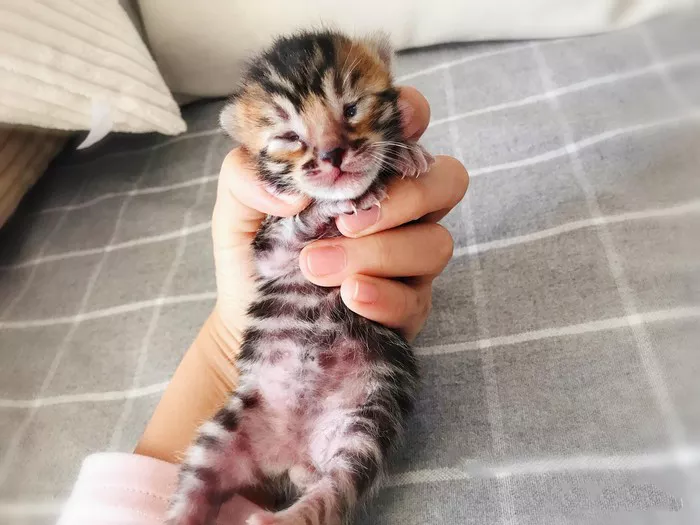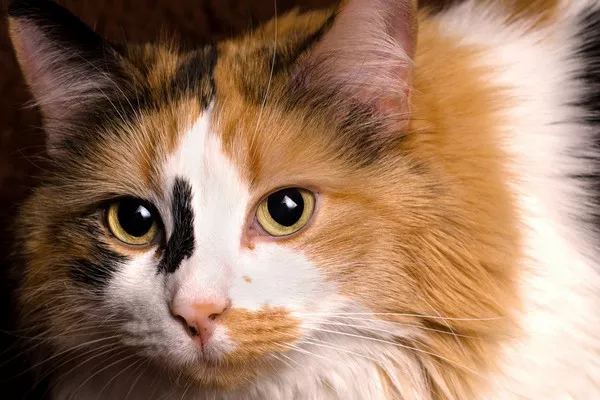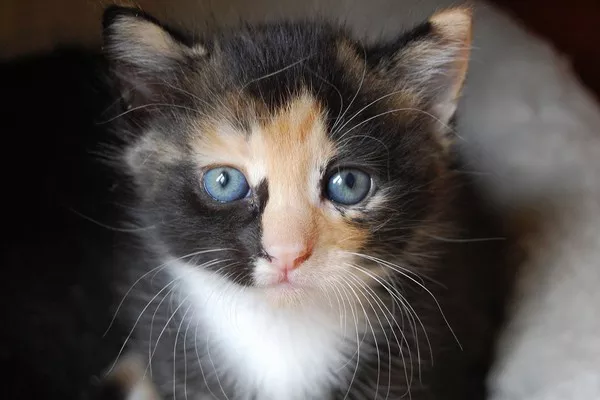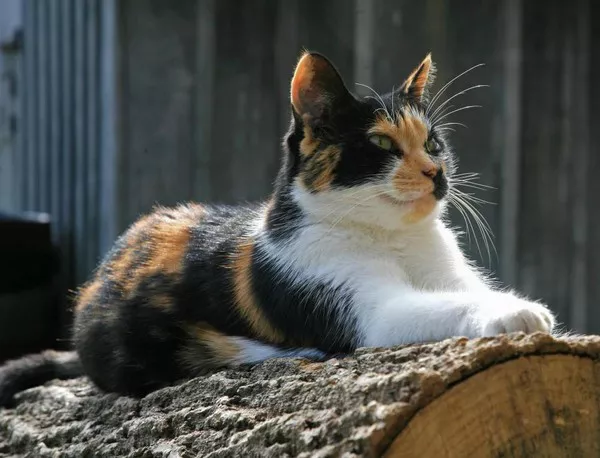Bengal cats, with their distinctive spotted or marbled coats reminiscent of wild leopards, are known for their striking appearance and energetic personalities. As feline companions, Bengal cats bring a touch of the exotic into our homes. One aspect of their behavior that often captures the attention of cat enthusiasts is their vocalization. In this exploration, we delve into the fascinating world of Bengal cats and their talkative nature, seeking to understand the reasons behind their vocal expressions and the ways in which they communicate with their human counterparts.
The Bengal Cat: A Brief Overview
Before we delve into the talkative tendencies of Bengal cats, let’s take a moment to appreciate the breed’s unique characteristics. Bengal cats are the result of the hybridization between domestic cats and the Asian leopard cat (Prionailurus bengalensis), a small wild cat native to Southeast Asia. The breed was developed to capture the wild aesthetic of leopards while maintaining a friendly and domesticated temperament.
Bengal cats are medium to large in size, with sleek, muscular bodies and distinctive coats featuring spots or marbled patterns. Their striking appearance, coupled with their energetic and playful personalities, has contributed to the popularity of Bengal cats as sought-after companions.
The Vocal Repertoire of Bengal Cats
Bengal cats are often described as vocal and expressive. While individual cats may vary in their vocalization tendencies, many Bengal cat owners report that their feline friends are not shy when it comes to expressing themselves verbally. The vocal repertoire of Bengal cats includes various sounds, each serving a specific purpose in feline communication.
1. Chirping and Chattering
One unique vocalization often associated with Bengal cats is chirping or chattering. This distinctive sound is characterized by a series of rapid, high-pitched noises that resemble a bird’s chirp. Bengal cats are known to produce these sounds when observing birds, insects, or other prey animals from a distance. Some theories suggest that this behavior may be an instinctive response to the anticipation of hunting.
2. Meowing and Purring
Like many domestic cat breeds, Bengal cats are adept at meowing to communicate with their human companions. However, the pitch and frequency of Bengal cat meows may vary, and some owners note that their Bengals have a more extensive range of vocalizations compared to other breeds. Purring, a soothing sound associated with contentment, is also a common vocalization in Bengal cats, especially during moments of relaxation and affection.
3. Growling and Hissing
While Bengal cats are generally known for their friendly and social nature, they may exhibit growling or hissing in certain situations. These vocalizations typically signal discomfort, fear, or a desire to establish territorial boundaries. Understanding the context in which growling or hissing occurs is crucial for interpreting a Bengal cat’s emotional state.
4. Trilling and Whining
Bengal cats are known for their trilling sounds, which are melodic and often express excitement or happiness. Trilling is a friendly and social vocalization, and Bengal cats may trill to greet their owners, express affection, or initiate play. On the other hand, whining sounds may indicate a desire for attention, food, or companionship. Bengal cats are known to be communicative and may use a combination of trills and whines to convey their needs.
Understanding Feline Communication
To comprehend the talkative nature of Bengal cats, it’s essential to delve into the world of feline communication. Cats use a variety of vocalizations, body language, and scent marking to express themselves and interact with their surroundings. The communicative behaviors of Bengal cats are rooted in both their domestic ancestry and the wild instincts inherited from the Asian leopard cat.
1. Social Bonds and Territory
Vocalization plays a crucial role in establishing social bonds among cats and in defining territorial boundaries. Bengal cats, with their playful and interactive nature, may use vocal signals to communicate with their human companions and fellow feline housemates. Trilling, purring, and meowing can be expressions of affection, camaraderie, or a desire for attention.
Growling and hissing, on the other hand, are often associated with territorial disputes or defensive postures. Bengal cats, despite their domestication, may retain some of the territorial instincts of their wild ancestors. Understanding the context in which these vocalizations occur helps foster a harmonious relationship between Bengal cats and their human families.
2. Hunting and Prey Instincts
The chirping and chattering sounds emitted by Bengal cats, particularly when observing birds or other prey, are intriguing aspects of their vocal behavior. These sounds are thought to be an expression of the cat’s innate hunting instincts. In the wild, cats use a combination of visual observation and vocal signals to coordinate group hunting efforts.
While Bengal cats may not be engaged in group hunting within a domestic setting, their chirping and chattering behaviors may be an instinctive response to the excitement of observing potential prey. This vocalization adds a layer of complexity to the communicative repertoire of Bengal cats, highlighting the intersection of domestication and primal instincts.
Factors Influencing Bengal Cat Vocalization
Several factors contribute to the talkative nature of Bengal cats. Understanding these influences helps cat owners interpret their feline companions’ vocalizations and respond appropriately to their needs. The following factors shed light on why Bengal cats may be more vocal compared to other breeds:
1. Breed Characteristics
The hybrid origin of Bengal cats, with the infusion of Asian leopard cat genes, may contribute to their heightened vocalization tendencies. The wild ancestry of the Asian leopard cat may manifest in the vocal repertoire of Bengal cats, including the unique chirping and chattering sounds associated with hunting behaviors.
Additionally, the social and interactive nature of Bengal cats may prompt them to use vocalizations as a means of communication with their human companions. Trilling, meowing, and other friendly sounds may be employed to express affection, seek attention, or initiate play.
2. Intelligence and Curiosity
Bengal cats are renowned for their intelligence and curiosity. These traits make them avid explorers of their environment, constantly seeking mental stimulation and engagement. Vocalization becomes a tool for expressing their curiosity, whether it be in response to new sights, sounds, or experiences.
The trilling and chirping sounds emitted by Bengal cats may be indicative of their excitement and interest in their surroundings. As highly interactive and intelligent animals, Bengal cats may use vocal signals to convey their eagerness to explore and engage with their environment.
3. Emotional Expression
Bengal cats are known for their emotional sensitivity and responsiveness to their human companions. They may use vocalizations as a means of expressing their emotions, whether it’s the joy of receiving attention, the excitement of playtime, or the desire for companionship.
Understanding the emotional context of Bengal cat vocalizations allows owners to respond appropriately and strengthen the bond between them and their feline friends. Recognizing the various sounds and their meanings contributes to effective communication in the unique language of Bengal cats.
Responding to Bengal Cat Vocalization
As Bengal cat owners become attuned to the vocal cues of their feline companions, it’s essential to respond thoughtfully to their needs and expressions. The following tips provide guidance on how to interpret and respond to Bengal cat vocalization:
1. Observe Context and Body Language
When deciphering Bengal cat vocalizations, consider the context in which the sounds occur. Observing the cat’s body language provides valuable insights into their emotional state and the purpose behind the vocalizations. Pay attention to tail positions, ear movements, and overall posture to understand the nuanced communication of Bengal cats.
2. Interactive Play and Engagement
Bengal cats thrive on interactive play and mental stimulation. Engaging in play sessions with toys, puzzles, and interactive games can help channel their energy and reduce excessive vocalization. Providing a variety of toys and activities stimulates their curiosity and offers a healthy outlet for their intelligence and playfulness.
3. Affectionate Responses
Bengal cats may use vocalizations to seek attention and express affection. Responding with gentle petting, verbal reassurance, or interactive play can strengthen the bond between the cat and its owner. Recognizing the cat’s need for companionship and responding with affectionate gestures fosters a positive and enriching relationship.
4. Creating Safe Spaces
Growling or hissing vocalizations may occur in situations where a Bengal cat feels threatened or stressed. Creating safe and secure spaces within the home, such as cozy hideaways or elevated perches, allows the cat to retreat when needed. Providing a stress-free environment helps minimize defensive vocalizations and promotes a sense of security.
5. Regular Veterinary Check-ups
Excessive or sudden changes in vocalization patterns may warrant a visit to the veterinarian. Health issues, discomfort, or pain could be underlying factors contributing to changes in a Bengal cat’s behavior. Regular veterinary check-ups ensure the overall well-being of the cat and address any potential health concerns.
6. Consistent Routine and Environment
Bengal cats appreciate routine and consistency in their environment. Establishing a regular feeding schedule, maintaining a familiar play routine, and providing a stable living environment contribute to the cat’s sense of security. Predictability in daily activities helps reduce stress and may positively impact vocalization patterns.
Conclusion
In conclusion, the talkative nature of Bengal cats is a fascinating aspect of their communicative repertoire. Shaped by a combination of breed characteristics, intelligence, curiosity, and emotional expression, Bengal cats use vocalizations to engage with their human companions and navigate their environment.
As cat enthusiasts and Bengal cat owners embrace the unique vocal tendencies of this breed, understanding the context and emotional nuances behind the sounds enhances the human-feline relationship. By responding thoughtfully to Bengal cat vocalizations and providing a stimulating and secure environment, owners can create a harmonious and enriching life for their talkative Bengal companions.
The art of communication between Bengal cats and their human counterparts extends beyond words, with trills, chirps, and purrs becoming integral components of the shared language that strengthens the bond between these extraordinary feline companions and the families fortunate enough to welcome them into their homes.

























